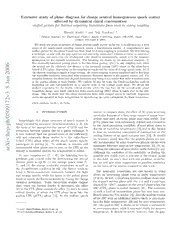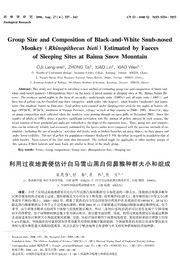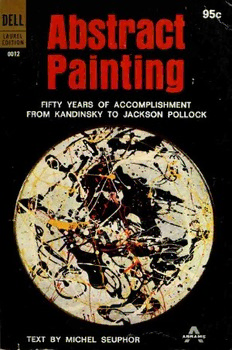
Abstract Painting. 50 Years of Accomplishment From Kandinsky to Jackson Pollock PDF
Preview Abstract Painting. 50 Years of Accomplishment From Kandinsky to Jackson Pollock
95c Abstract 0012 Painting FIFTY YEARS OF ACCOMPLISHMENT FROM KANDINSKY TO JACKSON POLLOCK r5^ TEXT BY MICHEL SEUPHOR ALSO AVAILABLE IN LAUREL EDITIONS ART TREASURES OF THE LOUVRE by Rene Huyghe MODERN AMERICAN PAINTING AND SCULPTURE by Sam Hunter MODERN FRENCH PAINTING by Sam Hunter Abstract Painting 50 YEARS OF ACCOMPLISHMENT, FROM KANDINSKY TO THE PRESENT TEXT BY MICHEL SEUPHOR * A LAUREL EDITION Published by DELL PUBLISHING CO., INC. 750 Third Avenue NewYork 17, N.Y. Libraryof Congress Catalog Card Number; 61-15924 Laurel (R) TM674623, Dell Publishing Co., Inc. All rights reserved Translated from the French by Haakon Chevalier No partofthe contents ofthis work may be reproduced withoutthe written permission of Harry N. Abrams, Inc., NewYork First Dell Printing 1964 Printed in Holland Smeets Photo-offsetWeert Holland ACKNOWLEDGMENTS The successful creation of an artbook must have the close collaboration of publisher, printer, and author. This is basic. But a book which deals exclusively with contemporary art depends more than most on the friendly cooperation of private collectors, museums of modern art, and art dealers. Thus, am anxious to convey here my gratitude to all those I who have helped so willingly in my complex undertaking. Particularly want to thank AA. Frangois Arp, Mime J. Arp- I Hagenbach, Mr. John Craven, Mme G. Dupin, M. Pierre Peissi, M.Jacques Putman, all of Paris. I am much obliged to the Musee National d'Art Moderne, Paris, and to thefollow- ing Parisian galleries: Ariel, Charpentier, Claude Bernard, Creuze, Denise Rene, Creuzevault, Daniel Cordier, Drouin, Dubourg, Europe Philadelphie, Flinker, de France, Jacques Massol Jeanne Bucher, Kleber, Knoedler, La Hune, Louis Carre, Louise Leiris, Maeght, Pierre, Rive-Droite, Villand and Galanis, XXeme Siecle, and the Galerie Internationale d'Art Contemporain. Thanks go also to Mr. and Mrs. Burton G. Tre- maine of Meriden, Connecticut; to Mrs. Kay Hillman, Dr. and Mrs. Arthur Lejwa, and Mrs. Silvia Pizitz of New York; to Mr. and Mrs. Henry A. Markus of Chicago; to Mr. and Mrs. Herbert M. Rothschild of Ossining, New York; to Mr. and Mrs. Harry L. Winston of Birmingham, Mich- igan; to the Museum of Modern Art, New York; to the Solomon R. Guggenheim Museum, and theWhitney Museum ofAmerican Art in NewYork; to the Philadelphia Museum of Art; and the following New York galleries: Andre Emmerich, Betty Parsons, Leo Castelli, Chalette, Kootz, Martha Jackson, and Sidney Janis; to the Esther Robles Gallery in Los Ange- les. In Europe, to Dr. Wolfgang Macke; to the Stadtische Galerie of Munich; the Kaiser Wilhelm Museum of Krefeld; the Staatliche Kunsthalle in Karlsruhe; the Stddtisches Kunsthaus of Bielefeld; the Galerie Der Spiegel in Cologne; the Galerie Otto Stangl in Munich; the Print Room in Vienna; the Musee d'Art Moderne in Brussels. In England, to Mr. Ro- land Penrose and Mr. E. J. Power of London; the Tate Galle- ry, London; and the London galleries of art: Arthur Tooth & Sons, Gimpel fils, and Lord's. In Milan, the Galleria d'Arte Moderna, and the following art galleries: Cardazzo, Loren- zelli, and Schwarz In Holland, the Stedelijk Museum, Am- sterdam; Gemeentemuseum, The Hague; the Kroller-Muller Museum, Otterlo. In Switzerland, M. Alberto Sartoris of Lutry; the Galerie Lienhard, Zurich; the Galerie Beyeler, Basel. must also mention the courtesies of many artists I and close relatives ofartists. Especially would like to thank the designer of the book, I Ben Duijvelshoff, for his devoted attention to every detail ofthe presentation. M.S PART ONE Before 1915 Our twentieth-centuryworld, with its swifttechnological and scientific advances and socio-economic upheavals, our century which has witnessed the rapid shrinking of the world's dimensions, was obligated to give its children an art which reflected these changes. Yet today the average man in the street (who may occasionally be led to cast a casual glance in the direction of artistic creation) still sees abstract art as a visual experience and mental challenge that is both — revolutionary and startling a form of art at times both irritating and aggressive, and atothertimes meaningless or merely innocuous and inoffensive. We know, ofcourse, how disconcerting such impressions can be. But the experienced observer, with his practiced eye, has an altogether different perspective; for him surprises are rare, everything is related, nothing manifests itself which has not been foreshadowed. Yetthefactremainsthattheartisticevolution peculiar to each century, to each generation (and in fact to each truly original artist), is such that developments nevertheless occur contrary to the most clearsighted prognostications. For while the general direction of the movement may be well known to us, any move is composed of a host of small accidents, which are unforeseeable and which may cause the movement's direction to swerve, to falter, and even, for a time, to change its course. Because of this uncertainty there is a certain element of surprise, no matter howclose and attentive the witness may be. Balzac and Baudelaire prophesied abstract art in their writings; the Impressionists, Post-Impressionists, and Fauves celebrated it in bold words, although apparently without quite knowing what they were saying, since none of them practiced what he preached. The Cubists at last resolutely ventured into this new territory, but despite the brilliance of their works they immediately drew back. They were to return to it, if their names happened to be Delaunay or Villon, only much later; Braque and Picasso never returned. No, this territorywhich todayappears so immense — a kind of promised land — was not to belong to the Cubists, however great; they sensed the emptiness. The renunciation of figurative art seemed to mortally imperil their youth, and they had too many flavors still to discover in the traditional values. Thus it was the older painters who first staked out the new territory and settled there for good: AAondrian was forty in 1912,Kupka forty-one, and Kandinsky forty-six. Since its beginnings in 1912, the multiplicity of forms of expression has been one ofthe most singularcharacteristics ofabstractpainting.Whenwe measurethedistancetraveled and the enormous present-day expansion of this art and then go back to the tiny core of artists working in 1912 we discover, notwithoutamazement,thatall the basic elements were already present at the start in the combined works of Kupka, Kandinsky, and Delaunay. The rectangular and horizontal-vertical style can be found in certain canvases of Kupka's of 1912; lyric effusiveness is the very essence of Kandinsky's work at this period, and some of these early paintings could be called tochiste or nonformal if they had been painted in 1960. Finally Delaunay contributed order and wisdom in a style rich with a kind of inner vibration. In his paintings, light is composed rather like a well-balanced musical work, to which the painter accords just the right amount of required warmth, without ever being carried away or dominated by it. Before such accomplished works of this first period, one is tempted to say that, with these men, art reached a destination rather than a point of departure. This statement, however, would overlook the uncontrollable factor of each individual and the unpre- dictable scope of his work. The art of the century had yet to find itself, there was a style to be created and a universal form to develop, there was a need to overcome the violent opposition of traditionalist circles, there was a war to face, a faith in their work to affirm. In short, itwas necessary to create history with what was yet contained within the seed. What this seed of 1912 contained was going to spread throughout the world and to manifest both its revolutionary character (as a wrenching loose from the naturalism of the last century) and the fundamental outgiving of its multiple nature. This multiplicity itself belonged to the spirit of the century: modern man, even more than man in the age of Montaigne, is "changeable and diverse." If he is truly unconstrained, nothing is so repellent to him as rigidity of attitudes. This multiplicity is above all an expression of the richness of the spirit, it is passionate, and at the same time open and flexible, having nothing in common with the eclecticism of the blase collector or the dilletante aesthete. Itis a sign of love, ofoverflowing abundance. At the root of this multiplicity there is a certain conception of reality, a specific conception of existence and of the values it contains. Matisse once said, "We are born with the sensibility of a period of civilization. We are not masters of our production, it is imposed upon us." This atonce appears self-evident. The difficulty begins when we try to define this sensibility — a sensibility peculiar to our epoch and which inevitably determines our selves. For we soon discover that there are as many distinct sensibilities as there are great artists. When compare the styles of Mondrian, Arp, I Delaunay, Kandinsky, Miro, Schwitters, Ernst, Herbin, Picasso, and Matisse, the only common denominator can I find is that none of them can be made to fit into the nineteenth century. The painting's frame, or the back- ground on which it hangs, remains. But against this back- ground, or within this frame, individualism remains dominant, perhaps more so todaythan ever before. As early as 1909, the Cubist painters destroyed the object and reconstructed it in a different way, improvising freely with pictorial means and without taking objective reality into account. In so doing, they implicitly discovered the uselessness of the object and, in fact, proved themselves, to bethefirstcreators of abstract painting. Their logic was such that they did not entirely repudiate the object, even though they refused to be dominated by it. As a consequence, no holds were barred in this wrestling match, in this new love-game between the object and painting as such, a game in which the actual object soon becamethe pictorialtechnique itself.Withthe Impressionists, as we know, technique was no less important; but a landscape always had to remain a landscape, the ideal painting being the one that would succeed in giving the viewer the direct impressions of the painter's retina. The "how" never had priorityoverthe "what." The opposite is true of Cubism. The nudes and the still lifes by Braque and Picasso (in the latter's great period) make no effort to be recognizable as such. These works ask the viewer to consider only the elements of painting as painting, and they ask him to derive his sole enjoymentfrom these elements. As a result, the "what" is absorbed by the "why." 10
The list of books you might like

The Sweetest Oblivion (Made Book 1)

Haunting Adeline

Corrupt (Devil's Night #1)

Believe Me

TS 122 115 - V6.6.0 - Digital cellular telecommunications system (Phase 2+); Universal Mobile Telecommunications System (UMTS); Service aspects; Charging and billing (3GPP TS 22.115 version 6.6.0 Release 6)
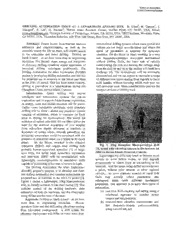
Drilling Automation Tests At A Lunar/Mars Analog Site
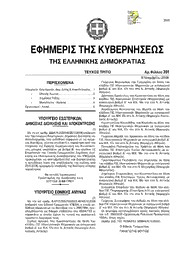
Greek Government Gazette: Part 3, 2006 no. 391
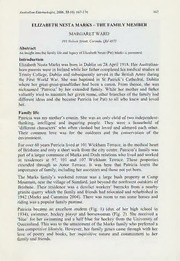
Elizabeth Nesta Marks - the family member

Avertissements Agricoles - Grandes cultures - Ile de France - 1993 - 8
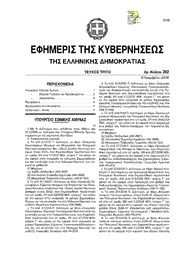
Greek Government Gazette: Part 3, 2006 no. 392
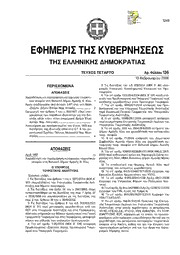
Greek Government Gazette: Part 4, 2006 no. 136
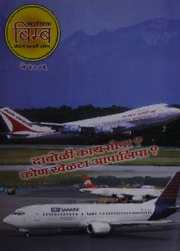
BIMB MASIK -MAY -2006
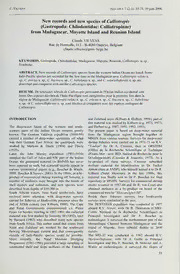
New records and new species of Calliotropis (Gastropoda : Chilodontidae
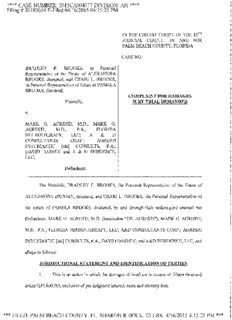
case nuiviber: 2015ca004377 division: ah

01102007-Minutes-Library
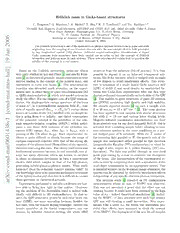
Frohlich mass in GaAs-based structures
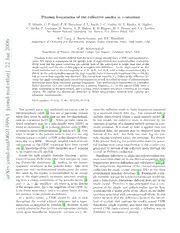
Pinning frequencies of the collective modes in $α$-uranium
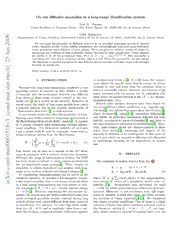
On the diffusive anomalies in a long-range Hamiltonian system

The Reach of a Chef: Beyond the Kitchen

